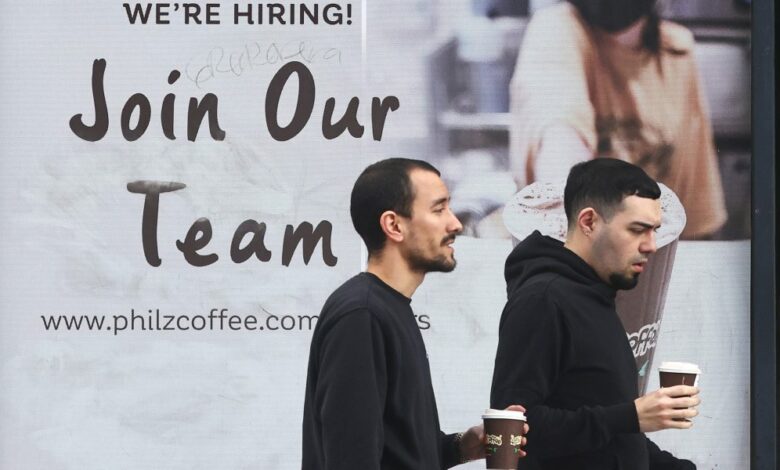Job openings in February stayed high, JOLTS data show


U.S. job openings barely changed in February, staying at historically high levels in a sign that the American job market remains strong.
The Labor Department reported Tuesday that employers posted 8.76 million job vacancies in February, up modestly from 8.75 million in January and about what economists had forecast.
But the Job Openings and Labor Turnover Survey, or JOLTS, showed that layoffs ticked up to 1.7 million in February from 1.6 million in January, the highest since March 2023. The number of Americans quitting their jobs – a sign of confidence they can find better pay or working conditions elsewhere – rose modestly to 3.5 million.
Monthly job openings are down from a peak of 12.2 million in March 2022 but are still at a high level. Before 2021, they’d never topped 8 million.
The high level of vacancies is a sign of the job market’s strength and endurance. When the Federal Reserve began raising its benchmark interest rates two years ago to combat inflation, most economists expected the higher borrowing costs to send the United States into recession.
Instead, the economy has continued to grow and employers have been seeking new workers and holding on to the ones they already have. Although the unemployment rate rose to 3.9% in February, it’s come in below 4% for 25 straight months, longest such streak since the 1960s.
“Although there is plenty of speculation that employment has slowed down, recent numbers, including job openings as well as initial jobless claims, continue to indicate that the U.S. labor market has remained stable,” Raymond James’ chief economist, Eugenio Aleman, said in a note.
At the same time, the higher interest rates have brought inflation down. In February, consumer prices were up 3.2% from a year earlier — down from a four-decade high year-over-year peak of 9.1% in June 2022.
The combination of easing inflation and sturdy job growth has raised hopes the Fed is managing to pull off a “soft landing’’ — taming inflation without triggering a recession. The Fed stopped raising rates last July and has signaled that it plans to reverse course and cut rates three times in 2024. But it appears to be in no hurry to start, given the economy’s strength and with inflation still above the central bank’s 2% target.
“Job openings are still elevated relative to pre-pandemic readings, signaling still-strong demand for workers,’’ said Rubeela Farooqi, chief U.S. economist at High Frequency Economics. “A strong labor market backdrop coupled with inflation receding but remaining above target supports the (Fed’s) current patient stance on future policy decisions.’’
Compared to layoffs, the steady drop in job openings is a painless way to cool a labor market that has been red hot, easing upward pressure on wages that can lead to higher prices.
“The cooldown of the US labor market hasn’t been entirely painless, but the shock has been muted compared to both expectations and historical precedent,” Nick Bunker, Indeed Hiring Lab’s economic research director, said in a note.
Hiring likely remained healthy last month. Economists expect the March jobs report, out Friday, to show that employers added nearly 193,000 jobs and that the unemployment dipped to 3.8%, according to a survey of forecasters by the data firm FactSet.
Source link




